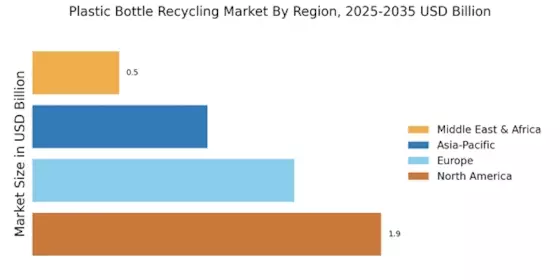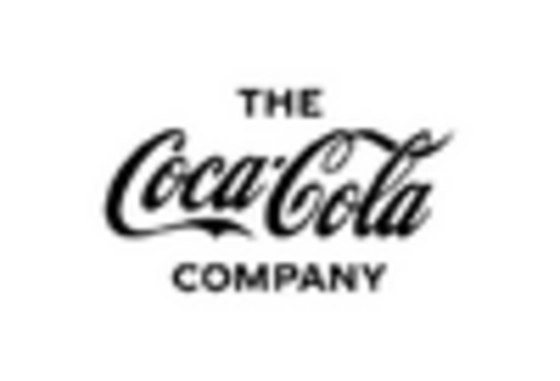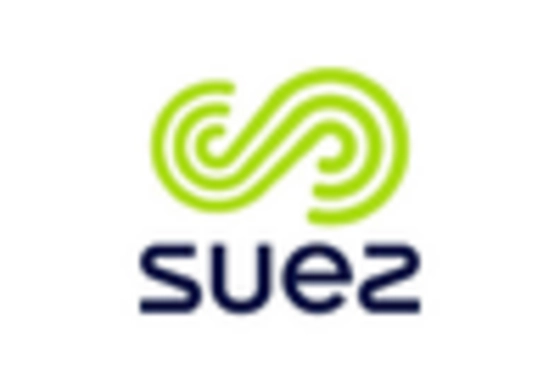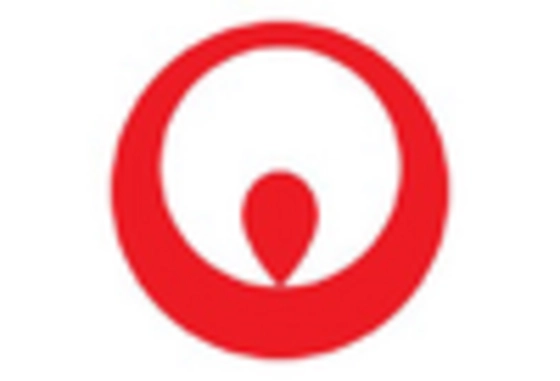The plastic bottle recycling market is moderately competitive and there are several production companies that are in the market but few major players are dominant. These share a prominent share in the global market and are expanding their boundaries across the globe. The initiatives have been taken and the new technical strategies and collaborations have increased the profitability of these companies.
List of the key major companies in the Global Plastic Bottle Recycling Market are
- Cospack America Corporation
- Amcor Limited
- BERICAP GmbH & Co. KG
- Rexam, Inc.
- Berry Global, Inc
- Graham Packaging Company Inc.
- Container Corporation of Canada
- Ontario Plastic Container Producers Ltd.
- Constar Internationals, Inc.
- Alpha Packaging
- Alpack Plastics
- Plastipak Holdings, Inc.
- Resilux NV
COVID-19 Analysis
The COVID-19 outbreak is affecting the countries and the global plastic bottle recycling market at a wider level. The supply-chain demand market has been affected so vigorously. The single-use plastic packaging and medical supplies are at the surge. Also, the governments have suspended the ban on single-use plastic bags and bottles. This is one of the factors that has dipped the global market shares of the Global Plastic Bottle Recycling Market.
There was a negative impact on the engineering plastic industry during the Covid-19 outbreak. On the other side, there are several difficulties in collection and sorting of mixed plastics, however, the less availability of resources had an adverse effect on the plastic bottle recycling market as per the report analysis.
Plastic Bottle Recycling Market Segment Overview
The Global Plastic Bottle Recycling Market is segmented on the basis of Source, Raw Material, Recycling Methods, End User and the region.For Example:
Plastic FilmsSynthetic FibersRigid Plastics & FoamsOthers (auto-parts, electrical goods, furniture and others)
- By Raw Material TypePolyethylene Terephthalate (PET)
Polyethylene (PE) – LPDE & HDPEPolypropylene (PP)Polyvinyl Chloride (PVC)Polystyrene (PS)Polyamide (PA)PolycarbonateAcrylonitrile-butadiene StyreneOther plastics under SPI code 7
- By Recycling MethodThermal decomposition
Heat compressionDistributed recyclingPyrolysisOthers
- By End-UserPackaging (Bottles, Containers, Bags & Films, Strapping, Others)
Building & Construction (Lumber, Pipe, Furnishings, and Carpets & Rugs and Others)TextilesAutomotive (Batteries, Others)Electrical & ElectronicsOthers (Agriculture, Aerospace and other industries)
North AmericaEuropeMiddle East & AfricaSouth America
Market Dynamics
The plastic bottle recycle market is picking up the pace and is expected to grow at a steady rate in the near future, boosted by increased demand for recycled plastic bottles. The low cost, light weight, and easy handling of the plastic packaging has made this market really popular in the past few years and is growing rapidly. The manufacturers also prefer the usage of plastic packaging as it is a cheap mode of production and will not hamper the quality of the product.
There are various factors that are boosting the Plastic Bottle Recycling Market such as energy conservation, reduced pollution and the reduced emission of the greenhouse gases. Moreover, almost all the governments of the countries are taking initiatives to enhance the awareness for the increased production of the recycling products. Plastic is one of the major products in this area that has been recycled for several applications. It is expected that with the increased demands and the usage of such products the production will increase and will show staggering growth during the forecast period.
-
Drivers
The plastic is used in many types and the disposal of plastic is done in an inappropriate way that causes air, water and land pollution. With the increased awareness towards the environment the advanced recycling processes have been introduced and it is the major driver that has increased the Global Plastic Bottle Recycling Market share during the past years. The resources were depleting because of the plastic pollution and recycling the waste plastic has played a significant role.
-
Opportunities
In the developed countries like the US, Europe and North America there are many social groups that are actively into recycling related programs and the public-sector is funding more than $100 millions for the advancement of such sectors. The increased awareness has offered the recycling market with many superior benefits such as reduction in the collection cost, increased market share percentages and tax exemptions as well. So, such initiatives should be taken at a global level so as the plastic bottle recycling market growth can be accelerated.
-
Restraints
The proper collection of the raw material is highly required for the plastic recycling market. If we consider globally, only 14% of the plastic waste has been used for the recycling and that can be used further as per the requirements. The biodiversity is impacted and the aquatic lives are living on a stake due to this reason. Many associations and governments are helping to get the market growth by regulating the disposal of the waste plastics.
-
Challenges
The major challenge is to export the plastic trash from other countries to the manufacturing or recycling plants. In 2016, China imported 51% of the global plastic from the other regions of the world and that is very cost effective in terms of the carriage charges and importing the plastic waste. So, countries decide to collect the waste from their native sources and try to propel in the global plastic bottle recycling market.
The recycling of plastic bottles is becoming one of the major markets and is being carried out at a very large scale. The recycling is the only process wherein the reuse of the plastics is done. The recycling helps the environment to lower the pollution levels by converting the lower grade plastic to usable products. The disposal of waste has been a major concern to reduce the CO2 emissions and to lower the pollution levels.
The advanced technologies and new processes have introduced various collection, sorting and reprocessing of the plastics and this has created new opportunities for the Global Plastic Bottle Recycling Market.The waste plastics are converted into a polymer that is known as Polyethylene terephthalate (PET) that refers to a thermoplastic polymer resin and this is highly used for the manufacturing of the plastic bottles. The PET bottles are more lighteighted, durable, non-reactive, transparent and thermally stable in nature. These bottles are getting more popularity in the market because of the various shapes and less manufacturing cost.
The packaging of drinking water and other sweet beverages is really in service these days. The other applications for the PET bottles are used in packaging solutions for salad dressings, medicines, dish detergents, household cleaners, and mouthwashes.
Competitive Landscape
- In February 2020, Amcor PLC, showcased a development and launched the PET container that is made up of 100% post-consumer recycled content (PCR) resin. It was a box for multivitamins that was launched in two sizes one is 100 cubic centimeters and other is 150 cubic centimeters.
- In October 2019, Bericap GmbH & Co KG launched the tethered caps and it helped in the reduction of pollution and this innovative solution added security and regulated the collecting agencies and the cap will remain attached to the bottle during the consumption and afterwards as well.
- In November 2017, SUEZ and LyondellBasell signed a joint venture that focused on high-quality circular polymers and developing high-standard products. These companies produced PP and HDPE recycled plastics.
-
Q2 2025: Rigid Polyolefins Recycling Market Hits Standstill Plastics Recyclers Europe reported that the growth of high-density polyethylene (HDPE) and polypropylene (PP) recycling capacities plateaued in 2023, with installed recycling capacities in EU27+3 reaching 1.7 million tonnes for HDPE and 1.8 million tonnes for PP, and approximately 300 recycling facilities operating. The stagnation is attributed to weaker demand, global polyolefin oversupply, high inflation, energy costs, and competition from lower-cost imports.


















Leave a Comment